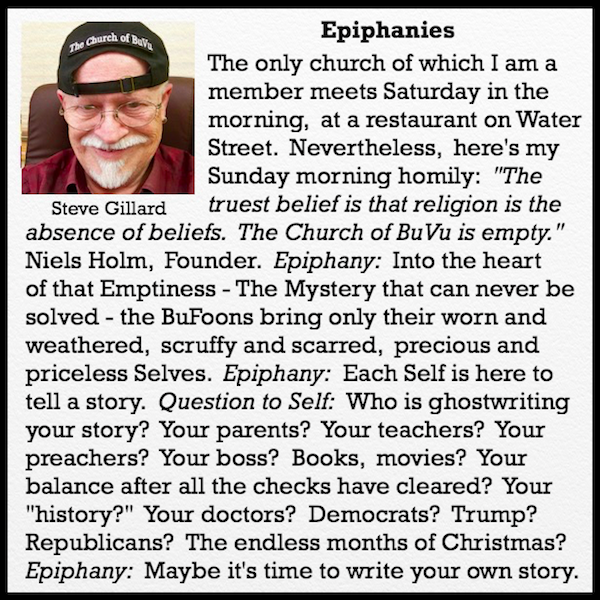
Shibboleths and Epiphanies



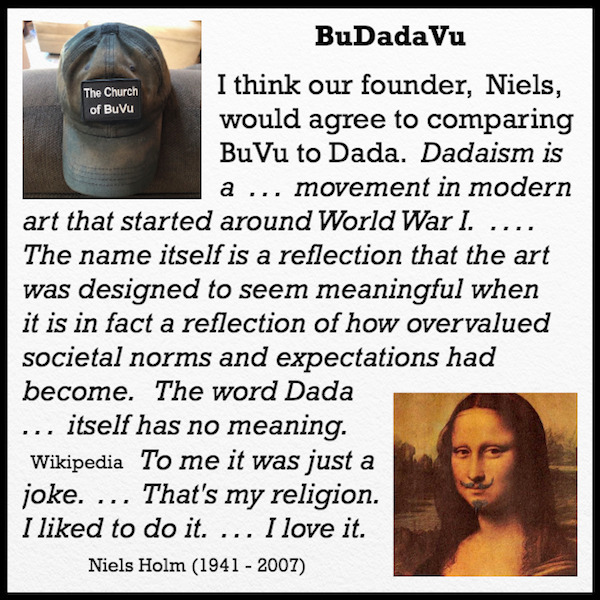
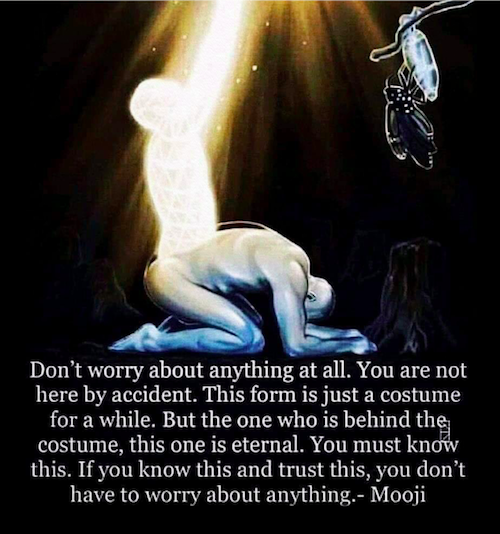
A smiling Charlie Bodony receives his Certificate of Ordination. Let the BuFoonery begin!
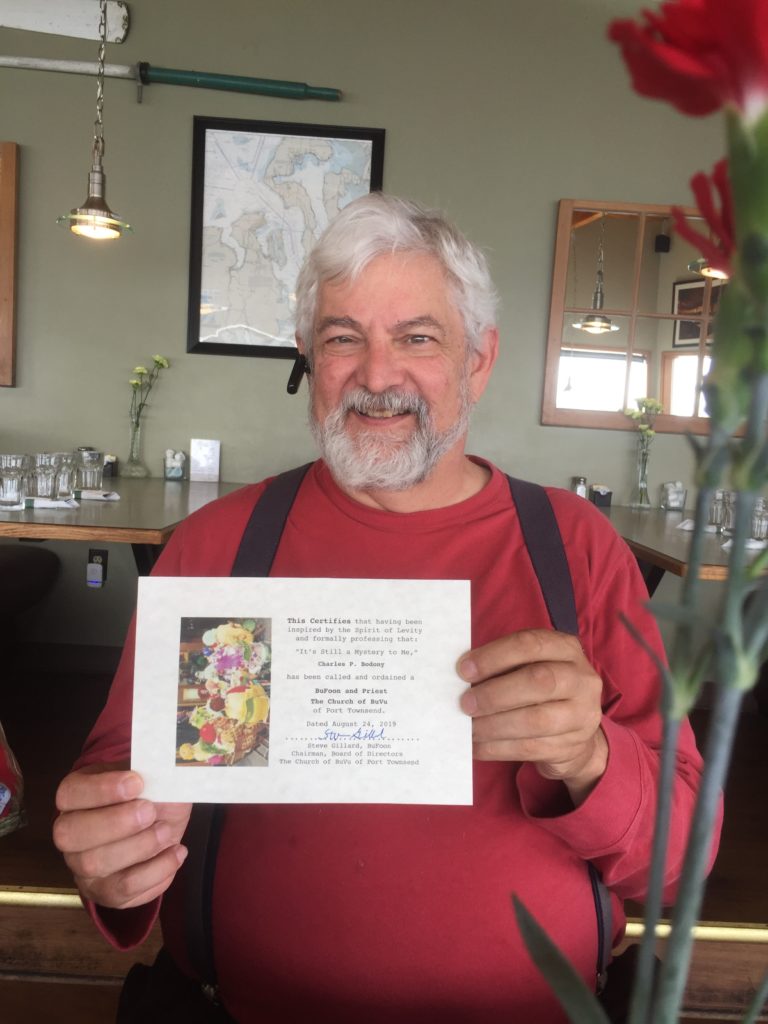
Los Espookys on HBO.

Another entry in our They Get Us, They Totally Get Us! “series.”
“It’s unclear, at any given time, how ‘good’ these tricks are supposed to be — or, in a few cases, how the group even pulled them off. But the show isn’t really about the tricks; it’s about telling good jokes, and how these theatrical goofs give the wannabe magicians behind the curtain a sense of direction and meaning.
“‘Los Espookys’ is a horror show that bathes its characters in sunlight, a surreal comedy whose absurdism is outmatched only by the quietly earnest tenderness its writers clearly feel toward the characters they’ve created.”
Another in our series of They Get Us! posts:
“By its tenth episode, Lodge 49 becomes a series about our need to believe in that underlying infrastructure — to feel that, beneath the reality we know, the daily existence we all, in the words of one character “just keep grinding out,” there is mystery, fate, purpose, magic. In its oddly gentle, gently odd and entirely distinct way, Lodge 49 makes as good an argument for the existence of a kind of shabby everyday magic as you’ll find anywhere.” NPR Review
We’re just going to steal that and turn it into our Mission Statement.

I feel like I’ve stumbled onto the motherlode. Pun intended. While visiting family in Copperopolis, California, with a rich history of mining for precious metals, we were introduced to a small museum in a nearby town. Sonora, I think. The museum had a wall devoted to a “benevolent organization” called E CLAMPUS VITUS with a history that tells me they are upstream in The Church of BuVu’s lineage. Read on:
E CLAMPUS VITUS
(Excerpt from article about origins of ECV, with prior paragraphs describing a wagon train headed to California and the 1949 Gold Rush, headed by Joseph (Joe) Zumwalt.)
The wagon train went by way of Bowling Green, Missouri, where Zumwalt and a partner, C.W. Wright, stopped at the local newspaper office to inquire about the road to California. In that office, they picked up copies of the ritual of an amusing organization called “Ecclampus Vitus” (Written by Ephraim Bee)
Zumwalt and Wright each bought a copy and put it in their trunks. Zumwalt and his family reached the “diggins” on September 5, 1849. (C.W. Wright has been lost in history.)
After a period of time in Sacramento and then in the diggins, it appears that Zumwalt remembered the ritual and observed that the men in the mines were in need of a humorous outlet. During his wanderings in the diggins around Hangtown (Placerville) in 1850 and early 1851, he apparently tried, with no great success, to start chapters of what became known as E CLAMPUS VITUS in various camps.
However, in 1851, he moves to Mokelumne Hill where he started Chapter #1001. the chartering was held in the community jail which was unoccupied at the moment. From then on in the diggins, the idea of E CLAMPUS VITUS spread like wildfire.
E CLAMPUS VITUS had several facets. It was a benevolent organization that gave aid to fellow miners, their widows and children, as the many newspaper articles of the period record.
But, ECV was also the greatest practical joke ever conceived and put over by all the thousands of miners (and jokers) who made light of their hardships and miseries in the diggins. The organization was, by nature, a spoof on the more dignified, straight-laced and deeply ritualistic fraternal orders of the day. In this vein, it’s purpose seems to have been solely to entertain its members by initiation of new members.
Every traveling salesman was forced to join E CLAMPUS VITUS before he could obtain an order. In Marysville, the renowned Lord Sholto Douglas opened a theatrical engagement, but the first performance failed to pay the rent. When he determined that he had to become a clamper to draw a crowd, he immediately applied for membership, and on the night of his initiation he played to a $1500 house.
The roisterous spirit of the new lodge, expressed by the slogan “Credo Quia Absurdum” (I believe because it is absurd) and by the Constitution of the Order which said that “all members are officers and all offices are of equal indignity,” had a tremendous appeal to the miners, who thought that hoaxing a tenderfoot was the greatest of sports. Therefore, when the hewgag would bray, signifying that a Poor Blind Candidate had appeared in camp and was ready to have the veil of ignorance lifted from his eyes by having revealed to him the great truths and secrets of the Ancient and Honorable Order of E CLAMPUS VITUS, the brethren hurriedly gathered from far and near for the merriment.
With the decline of mining and the depopulation of the camps in the diggins, ECV also declined, so that by 1915, there was only one lodge left.
E CLAMPUS VITUS redivivus, Clamperhood as it exists today, started about 1930 as the observance of an historical curiosity. Lovers of California history Carl Wheat, George Ezra Dane, Leon Whitsell and several of their friends gathered in San Francisco to talk about this colorful group that they had read about. They continued to meet periodically after that to enjoy its amusing aspects, and they formally revived E CLAMPUS VITUS in 1931, at the Clift Hotel in San Francisco as Yerba Buena Redivivus #1.
They discovered a man, then in his 80’s, who had been a member of Balaam Lodge #107402 ECV in Sierra City during the decline of the mining days. This man, Adam Lee Moore, was able to recall the ritual of initiation and the signs of ECV almost in its entirety. (It is said that during the early clamper meetings, none of the brothers was in any condition to keep the minutes and afterwards nobody could remember what had taken place.)
There are 40+ chapters as of this writing, with many more “Outposts” (wannabe chapters) to join the organization in the future.
* * * * *
(Excerpt from another history of ECV.)
Just how E Clampus Vitus came to be is a matter of some conjecture and sometimes subject to a variety of versions and interpretations well suited to the occasion at hand. Legend tells of its creation in 4004B.C. but most of the supporting historical records and tablet archives were destroyed in a cataclysmic event many centuries ago when a huge comet passed near the Earth and wrecked havoc on our planet before being trapped in our solar system. That catastrophic celestial passing was described by the late Immanuel Velikovsky in his book “Worlds in Collision” with the comet identified as what we now know to be the planet Venus. The surviving records are thought to have been lost in the fire that destroyed the Great Libraries of Alexandria, Egypt in the third century B.C. What is know is that in 1845 a tavern, hotel and stable owner in Lewisport, West Virginia, named Ephriam Bee received a commission authorizing him to extend the work and influence of the Ancient and Honorable Order of E Clampus Vitus from the Emperor of China. The commission was handed to Mr. Bee by a Mr. Caleb Cushing who had returned from China in 1844 while serving the government in establishing diplomatic and trade relations in the far east. E Clampus Vitus, or ECV as it is also known, succeeded and flourished where other orders failed for it was Bee’s belief that any man of upstanding character who was of age could join, unencumbered by the restrictions of other fraternal organizations. ECV was brought to California by Mr. Joe Zumwalt in 1849, although the exact route is subject to debate. One account has Zumwalt leaving Illinois in March of 1849 and arriving in Sacramento in late October of the same year. Others believe he left Missouri with a Clamper companion named W.C.Wright and first settled in Hangtown (later renamed Placerville) before moving on to what is now properly known as Mokelumne Hill in 1850. Typical migration routes to the gold fields could have made either or both versions correct. Regardless of which path Zumwalt took, Mokelumne Lodge Number 1001 first opened its doors in September, 1851. In later years an argument arose claiming Clamper activity in both Sierra City and Downieville before the generally accepted beginnings in Mokelumne. No doubt that debate will never be settled to everyone’s satisfaction.
Clamper membership grew like wildfire and chapters sprang up nearly everywhere there was mining activity. Before long it was the largest organization in the Gold Rush country and had spread to the nearby territories. As noted in Back Roads of California (Sunset, Lane Publishing), nearly every man was a Clamper and those who weren’t found themselves on the outside of business and social life. Itinerant salesmen, known as Drummers or Hawkers, soon learned that Clampers only did business with other Clampers. It was, after all, a fun loving group that provided diversion and camaraderie in what was more often than not a hazardous life.
One should never overlook the fact that the Clampers were in fact a highly respected and honored organization. In spite of their well deserved reputation as hard drinking pranksters, there was a benevolent serious side to their activity. Caring for the “Widows and Orphans” of miners was more than a mere slogan. Indeed, E Clampus Vitus was by far the largest charitable organization of the time and certainly the only one assisting the families of killed or injured miners. Mining accidents and injuries were common. A man killed or injured and unable to work left an almost instantly destitute family. In many cases gifts of money or food mysteriously appeared but the donor was always anonymous. In other instances the widow, or “widder” as they were known, discovered some unnamed person had made the mortgage or rent payments and saved her and the children from homelessness in a hostile land. Clamper charity was unique in that, with few exceptions, it was always done anonymously, quietly and without fanfare although there was rarely any question as to the benefactor’s true identity.
* * * * *
The Church of BuVu bows in respect to our spiritual forebears.
I believe our founder, Niels, would have loved comparing BuVu to Dada. I think the similarities are startling.
“Dadaism is an artistic movement in modern art that started around World War I. . . . . The name itself is a reflection that the art was designed to seem meaningful when it is in fact a reflection of how overvalued societal norms and expectations had become. The word “Dada” in and of itself has no meaning.” Wikipedia
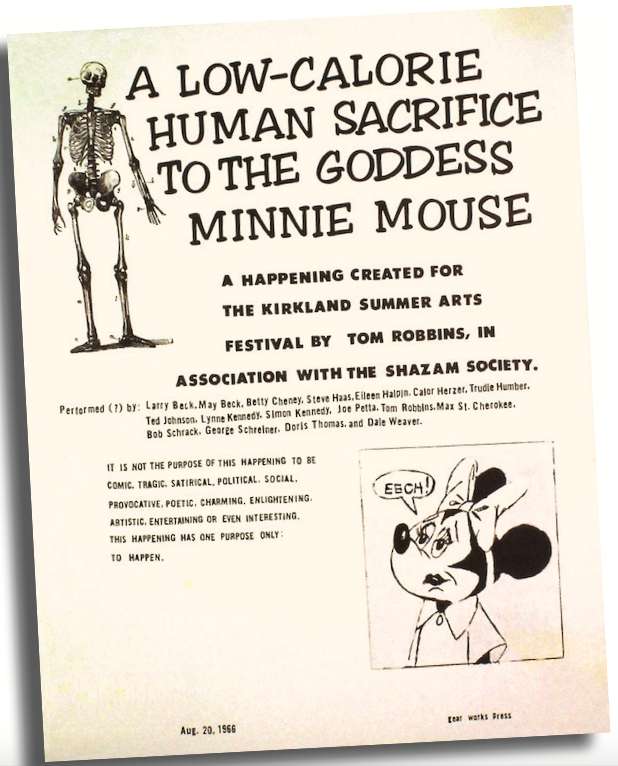
“A theme in Tom Robbins first two books was ‘joy in spite of everything.’ His characters suffered, died, stared down tyrants and still opted for joy. And Robbins seemed to relish playing the jester, or more accurately, the trickster, ‘a figure other cultures have used as a vehicle for mythology and mirth.’ The role fit comfortably on a smart aleck who called his family ‘a southern Baptist version of The Simpsons,’ and once led the neo-Dada Shazam Society’s ‘happenings’ with names such as, ’A low-calorie human sacrifice to the goddess Minnie Mouse.’ (At that ‘happening’ Robbins encountered a dazed docent, the wife of a Seattle surgeon, muttering, ‘Somebody put a fish down my blouse.’)” from “Mark Twain With An Illegal Smile” Bob Young, LEGACY WASHINGTON, Secretary of State of Washington https://www.sos.wa.gov/_assets/legacy/tom-robbins-profile.pdf
* * * * *
“But to say it’s all meaningless. Isn’t that a cop-out?”
“Maybe. But it seems to me that the real cop-out is to say that the universe has meaning but that we ‘mere mortals’ are incapable of ever knowing that meaning. Mystery is a part of nature’s style, that’s all. It’s the Infinite Goof. It’s meaning that is of no meaning. That paradox is the key to the meaning of meaning. To look for meaning – or the lack of it – in things is a game played by beings of limited consciousness. Behind everything in life is a process that is beyond meaning. Not beyond understanding, mind you, but beyond meaning.”
from Another Roadside Attraction – Tom Robbins
